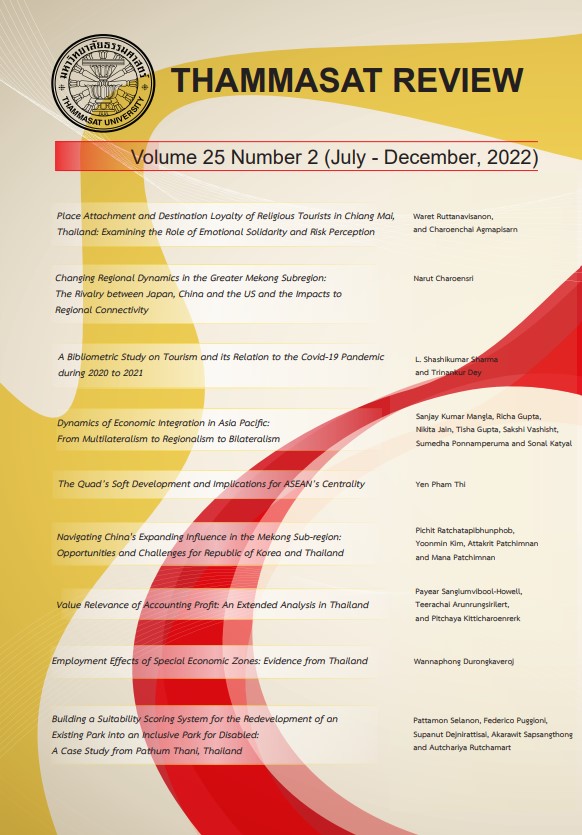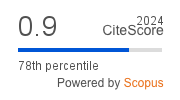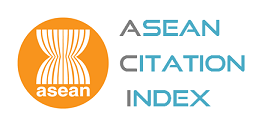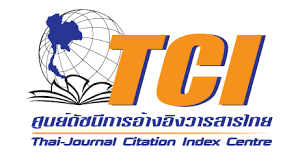Place Attachment and Destination Loyalty of Religious Tourists in Chiang Mai, Thailand: Examining the Role of Emotional Solidarity and Risk Perception
Keywords:
Place Attachment, Destination Loyalty, Emotional Solidarity, Risk Perception, Religious TourismAbstract
Religious tourism is a term that refers to contemporary travel patterns to religiously themed tourist destinations when tourists satisfy their religious and/or recreational needs. The growth of religious tourism is inextricably linked to the worldwide increase in spiritual searching by individuals of all ages, cultures, and religions. Religious destinations are places of development, commitment, and vitality, yet they often attract attention for their emotional significance. This research investigates tourists’ destination loyalty through the perspectives of their emotional connection to the place, their emotional solidarity with locals, and their risk perception. Based on data collected from 543 Thai domestic tourists to Chiang Mai’s temples, it was founded that place attachment had a direct effect on emotional solidarity. Moreover, it was shown that emotional solidarity is a significant predictor of destination loyalty. Additionally, it was demonstrated that the significant mediated relationships between place attachment and destination loyalty through the three aspects of emotional solidarity. Furthermore, the tourists’ risk perception of Chiang Mai during the COVID-19 epidemic indicated that the moderating relationships between emotional solidarity and destination loyalty was insignificant. Several managerial implications for DMOs are suggested by this research.
References
Al-Ansi, A., Han, H., Kim, S., & King, B. (2020). Inconvenient experiences among muslim travelers: An analysis of the multiple causes. Journal of Travel Research, 6(6), 1-19. https://doi.org/10.1177/0047287520934870
Aleshinloye, K. D., Fu, X., Ribeiro, M. A., Woosnam, K. M., & Tasci, A. D. A. (2019). The influence of place attachment on social distance: Examining mediating effects of emotional solidarity and the moderating role of interaction. Journal of Travel Research, 59(5), 828-849. https://doi.org/10.1177/0047287519863883
Ali, F., Rasoolimanesh, S. M., Sarstedt, M., Ringle, C. M., & Ryu, K. (2018). An assessment of the use of partial least squares structural equation modeling (PLS-SEM) in hospitality research. International Journal of Contemporary Hospitality Management, 30(1), 514-538. https://doi.org/10.1108/ijchm-10-2016-0568
Álvarez-García, J., Rama, M. d. l. C. d. R., & Gómez-Ullate, M. (2018). Handbook of research on socio-economic impacts of religious tourism and pilgrimage (J. Álvarez-García, M. d. l. C. d. R. Rama, & M. Gómez-Ullate, Eds.). IGI Global.
Biswakarma, G. (2017). Impact of destination image and perceived risk on behavioral intention of travelers to Nepal. International Journal of Advanced Research and Publications, 1(5), 62-71.
Butthipsakul, T., & Soontayatron, S. (2017). Tourist behaviors on religion tourism at Buddhist temples in Nan Province. Academic Journal Institute of Physical Education, 9(1), 63-76.
Caber, M., González-Rodríguez, M. R., Albayrak, T., & Simonetti, B. (2020). Does perceived risk really matter in travel behaviour? Journal of Vacation Marketing, 26(3), 334-353. https://doi.org/10.1177/1356766720927762
CBI The Netherlands Ministry of Foreign Affairs. (2020). The European market potential for religious tourism. https://www.cbi.eu/market-information/tourism/religious-tourism/market-potential
Chen, C. F., & Chen, F. S. (2010). Experience quality, perceived value, satisfaction and behavioral intentions for heritage tourists. Tourism Management, 31(1), 29-35. https://doi.org/10.1016/j.tourman.2009.02.008
Chen, Z., Ryan, C., & Zhang, Y. (2021). Transgenerational place attachment in a New Zealand seaside destination. Tourism Management, 82, 1-11. https://doi.org/10.1016/j.tourman. 2020.104196
Choe, J., & O’ Regan, M. (2015). Religious tourism experiences in South East Asia. In R. Raj & K. Griffin (Eds.), Religious tourism and pilgrimage management: An international perspective (2nd ed., pp. 191-204). CABI Publishing.
Choe, J., & O’ Regan, M. (2020). Faith Manifest: Spiritual and Mindfulness Tourism in Chiang Mai, Thailand. Religions, 11(4). https://doi.org/10.3390/rel11040177
Chuamuangphan, N., & Mulmit, P. (2018). Tourism patterns in tourist attractions for the development of revisit tourism destinations in Nakhon Pathom province and its linkage areas. Journal of Hunamities and Social Sciences Surin Rajabhat University, 20 (Special Issue), 133-145.
Chuamuangphan, N., Mulmit, P., Nomnumsab, W., Pratum, T., Kongprem, N., & Fakyen, A. (2018). The tourism destinations development for value added and revisting tourists in Nakhaon Pathom and related provinces. Research and Development Journal Loei Rajabhat University, 13(46), 78-89.
Cossío-Silva, F.-J., Revilla-Camacho, M.-Á., & Vega-Vázquez, M. (2019). The tourist loyalty index: A new indicator for measuring tourist destination loyalty? Journal of Innovation & Knowledge, 4(2), 71-77. https://doi.org/10.1016/j.jik.2017.10.003
Counted, V., & Zock, H. (2019). Place spirituality: An attachment perspective. Archive for the Psychology of Religion, 41(1), 12-25. https://doi.org/10.1177/0084672419833448
Detmit, B. (2020). Opportunities and limitations of religion tourism (temple) in Thailand 4.0 era. Business Review Journal, 12(2), 199-210.
Dwyer, L., Chen, N., & Lee, J. (2019). The role of place attachment in tourism research. Journal of Travel & Tourism Marketing, 36(5), 645-652. https://doi.org/10.1080/10548408.2019.1612824
Eom, T., Han, H., & Song, H. (2020). Discovering the perceived attributes of CBT destination travelers in South Korea: A mixed method approach. Tourism Management, 77, 1-13. https://doi.org/10.1016/j.tourman.2019.104013
Erul, E., Woosnam, K. M., & McIntosh, W. A. (2020). Considering emotional solidarity and the theory of planned behavior in explaining behavioral intentions to support tourism development. Journal of Sustainable Tourism, 28(8), 1158-1173. https://doi.org/10.1080/09669582.2020.1726935
George, D., & Mallery, P. (2016). IBM SPSS Statistics 23 Step by Step: A Simple Guide and Reference (fourteenth ed.). Routledge.
Godovykh, M., Pizam, A., & Bahja, F. (2021). Antecedents and outcomes of health risk perceptions in tourism, following the COVID-19 pandemic. Tourism Review, ahead-of-print(ahead-of-print). https://doi.org/10.1108/tr-06-2020-0257
Godovykh, M., & Tasci, A. D. A. (2020). The influence of post-visit emotions on destination loyalty. Tourism Review, 76(1), 277-288. https://doi.org/10.1108/tr-01-2020-0025
Hair, J. F., Black, W. C., Babin, B. J., & Anderson, R. E. (2019). Multivariate data analysis (Eighth ed.). Cengage.
Hair, J. F., Hult, G. T. M., Ringle, C. M., & Sarstedt, M. (2017). A Primer on Partial Least Squares Structural Equation Modeling (PLS-SEM) (Second ed.). Sage.
Hair, J. F., Risher, J. J., Sarstedt, M., & Ringle, C. M. (2019). When to use and how to report the results of PLS-SEM. European Business Review, 31(1), 2-24. https://doi.org/10.1108/ebr-11-2018-0203
Hammarström, G. (2005). The construct of intergenerational solidarity in a lineage perspective: A discussion on underlying theoretical assumptions. Journal of Aging Studies, 19(1), 33-51.
Hang, H., Aroean, L., & Chen, Z. (2020). Building emotional attaching during COVID-19. Annals of Tourism Research, 83, 1-4. https://doi.org/10.1016/j.annals.2020.103006
Hanks, L., Zhang, L., & Line, N. (2020). Perceived similarity in third places: Understanding the effect of place attachment. International Journal of Hospitality Management, 86, 1-9. https://doi.org/10.1016/j.ijhm.2020.102455
Hosany, S., Buzova, D., & Sanz-Blas, S. (2019). The influence of place attachment, ad-evoked positive affect, and motivation on intention to visit: Imagination proclivity as a moderator. Journal of Travel Research, 59(3), 477-495. https://doi.org/10.1177/0047287519830789
Infosearch. (2021). The survay of Thai travel behaviour 2020.
Joo, D., & Woosnam, K. M. (2019). Measuring tourists’ emotional solidarity with one another—A modification of the emotional solidarity scale. Journal of Travel Research, 59(7), 1186-1203. https://doi.org/10.1177/0047287519878503
Juric, J., Lindenmeier, J., & Arnold, C. (2020). Do emotional solidarity factors mediate the effect of personality traits on the inclination to use nonmonetary peer-to-peer accommodation networks? Journal of Travel Research, 60(1), 47-64. https://doi.org/10.1177/0047287519895127
Kastenholz, E., Marques, C. P., & Carneiro, M. J. (2020). Place attachment through sensory-rich, emotion-generating place experiences in rural tourism. Journal of Destination Marketing & Management, 17, 1-11. https://doi.org/10.1016/j.jdmm.2020.100455
Konu, H., Murphy, J., Komppula, R., & Mikkonen, T. (2020). Investigating emotional commitment towards a region and a hotel brand. International Journal of Hospitality Management, 87. https://doi.org/10.1016/j.ijhm.2020.102467
Lai, H. K., Pinto, P., & Pintassilgo, P. (2020). Quality of life and emotional solidarity in residents’ attitudes toward tourists: The case of Macau. Journal of Travel Research. https://doi.org/10.1177/0047287520918016
Li, Y. Q., & Liu, C. H. (2020). Impact of cultural contact on satisfaction and attachment: Mediating roles of creative experiences and cultural memories. Journal of Hospitality Marketing & Management, 29(2), 221-245. https://doi.org/10.1080/19368623. 2019.1611516
Li, Z., Zhang, S., Liu, X., Kozak, M., & Wen, J. (2020). Seeing the invisible hand: Underlying effects of COVID-19 on tourists’ behavioral patterns. Journal of Destination Marketing & Management, 18. https://doi.org/10.1016/j.jdmm.2020.100502
Matiza, T. (2020). Post-COVID-19 crisis travel behaviour: Towards mitigating the effects of perceived risk. Journal of Tourism Futures, ahead-of-print(ahead-of-print). https://doi.org/10.1108/jtf-04-2020-0063
Mazumdar, S., & Mazumdar, S. (2004). Religion and place attachment: A study of sacred places. Journal of Environmental Psychology, 24(3), 385-397. https://doi.org/10. 1016/j.jenvp.2004.08.005
Ministry of Tourism and Sports Thailand. (2021). Spiritual Tourism (Tourism Economice Review, Issue 1).
Moghavvemi, S., Woosnam, K. M., Paramanathan, T., Musa, G., & Hamzah, A. (2017). The effect of residents’ personality, emotional solidarity, and community commitment on support for tourism development. Tourism Management, 63, 242-254. https://doi.org/10.1016/j.tourman.2017.06.021
Patwardhan, V., Ribeiro, M. A., Payini, V., Woosnam, K. M., Mallya, J., & Gopalakrishnan, P. (2020). Visitors’ place attachment and destination loyalty: Examining the roles of emotional solidarity and perceived safety. Journal of Travel Research, 59(1), 3-21. https://doi.org/10.1177/0047287518824157
Pompai, P. J., Yupas, Y., & Phosing, P. (2020). Temples and tourism promotion on the Mekong river. Journal of Social Science and Buddhistic Anthropology, 5(5), 158-170.
Poushneh, A. (2021). How close do we feel to virtual product to make a purchase decision? Impact of perceived proximity to virtual product and temporal purchase intention. Journal of Retailing and Consumer Services, 63. https://doi.org/10.1016/j.jretconser. 2021.102717
Rashid, A. G. (2018). Religious tourism – a review of the literature. Journal of Hospitality and Tourism Insights, 1(2), 150-167. https://doi.org/10.1108/jhti-10-2017-0007
Ribeiro, M. A., Woosnam, K. M., Pinto, P., & Silva, J. A. (2017). Tourists’ destination loyalty through emotional solidarity with residents: An integrative moderated mediation model. Journal of Travel Research, 57(3), 279-295. https://doi.org/10.1177/ 0047287517699089
Ringle, C. M., Wende, S., & Becker, J.-M. (2015). SmartPLS 3. SmartPLS. https://www.smartpls.com
Rinschede, G. (1992). Forms of religious tourism. Annals of Tourism Research, 19.
Ruttanavisanon, W., & Agmapisarn, C. (2022). Religious tourism in Thailand - A review of Thai literature from 2012-2021. Social Science Asia, 8(1), 12-25.
Sánchez-Cañizares, S. M., Cabeza-Ramírez, L. J., Muñoz-Fernández, G., & Fuentes-García, F. J. (2020). Impact of the perceived risk from Covid-19 on intention to travel. Current Issues in Tourism, 1-15. https://doi.org/10.1080/13683500.2020.1829571
Silva, C., Abrantes, J. L., & Herstein, R. (2018). Linking sacred place preferences with place meaning: A conceptual model of relationship between sacred place motivations and place attachment. International Journal of Multidisciplinarity in Business and Science, 4(5).
Stăncioiu, A.-F., & Dițoiu, M.-C. (2016). Place attachment. In J. Jafari & H. Xiao (Eds.), Encyclopedia of Tourism (pp. 724). Switzerland: Springer International.
Stylidis, D. (2020). Using destination image and place attachment to explore support for tourism development: The case of tourism versus non-tourism employees in Eilat. Journal of Hospitality & Tourism Research, 44(6), 951-973. https://doi.org/10. 1177/1096348020919157
Stylidis, D., Woosnam, K. M., & Ivkov, M. (2020). Tourists’ emotional solidarity with residents: A segmentation analysis and its links to destination image and loyalty. Journal of Destination Marketing & Management, 17. https://doi.org/10.1016/j.jdmm.2020. 100458
Stylidis, D., Woosnam, K. M., Ivkov, M., & Kim, S. S. (2020). Destination loyalty explained through place attachment, destination familiarity and destination image. International Journal of Tourism Research, 22(5), 604-616. https://doi.org/10.1002/jtr.2359
Suess, C., Woosnam, K. M., & Erul, E. (2020). Stranger-danger? Understanding the moderating effects of children in the household on non-hosting residents' emotional solidarity with Airbnb visitors, feeling safe, and support for Airbnb. Tourism Management, 77. https://doi.org/10.1016/j.tourman.2019.103952
Tourism Authority of Thailand. (n.d.). Temple in Chiang Mai. Retrieved January 24 from https://www.tourismthailand.org/Search-result/attraction?category_id=5&destination_id=101&sort_by=datetime_updated_desc&page=1&perpage=15&menu=attraction
Usakli, A., & Kucukergin, K. G. (2018). Using partial least squares structural equation modeling in hospitality and tourism. International Journal of Contemporary Hospitality Management, 30(11), 3462-3512.
Wang, J., & Wang, X. (2012). Structural equation modeling : Applications using mplus. Higher Education Press.
Wang, S., Berbekova, A., & Uysal, M. (2021). Is this about feeling? The interplay of emotional well-being, solidarity, and residents’ attitude. Journal of Travel Research, 66(6), 1180-1195.
Wang, Y. C., Liu, C. R., Huang, W. S., & Chen, S. P. (2020). Destination fascination and destination loyalty: Subjective well-being and destination attachment as mediators. Journal of Travel Research, 59(3), 496-511.
Wong, K. K.-K. (2019). Mastering Partial Least Squares Structural Equation Modeling (PLS-SEM) with SmartPLS in 38 Hours. iUniverse.
Woosnam, K. M., Aleshinloye, K. D., Strzelecka, M., & Erul, E. (2016). The role of place attachment in developing emotional solidarity with residents. Journal of Hospitality & Tourism Research, 42(7), 1058-1066. https://doi.org/10.1177/1096348016671396
Woosnam, K. M., & Norman, W. C. (2009). Measuring residents’ emotional solidarity with tourists: Scale development of Durkheim’s theoretical constructs. Journal of Travel Research, 49(3), 365-380. https://doi.org/10.1177/0047287509346858
Woosnam, K. M., Norman, W. C., & Ying, T. (2009). Exploring the theoretical framework of emotional solidarity between residents and tourists. Journal of Travel Research, 48(2), 245-258. https://doi.org/10.1177/0047287509332334
World Tourism Organization. (2014). Tourism can protect and promote religious heritage. Retrieved 11 January from https://www.unwto.org/archive/europe/press-release/2014-12-10/tourism-can-protect-and-promote-religious-heritage
Xu, X., & Gursoy, D. (2020). Exploring the relationship between servicescape, place attachment, and intention to recommend accommodations marketed through sharing economy platforms. Journal of Travel & Tourism Marketing, 37(4), 429-446. https://doi.org/10.1080/10548408.2020.1784365
Zhan, L., Zeng, X., Morrison, A. M., Liang, H., & Coca-Stefaniak, J. A. (2020). A risk perception scale for travel to a crisis epicentre: visiting Wuhan after COVID-19. Current Issues in Tourism, 1-18. https://doi.org/10.1080/13683500.2020.1857712
Downloads
Published
How to Cite
Issue
Section
License
Copyright (c) 2022 Thammasat Review

This work is licensed under a Creative Commons Attribution-NonCommercial-NoDerivatives 4.0 International License.
The opinions and ideas expressed in all submissions published in Thammasat Review are solely that of the author(s) and do not necessarily reflect that of the editors or the editorial board.
The copyright of all articles including all written content and illustrations belong to Thammasat Review. Any individuals or organisation wishing to publish, reproduce and distribute a particular manuscript must seek permission from the journal first.








